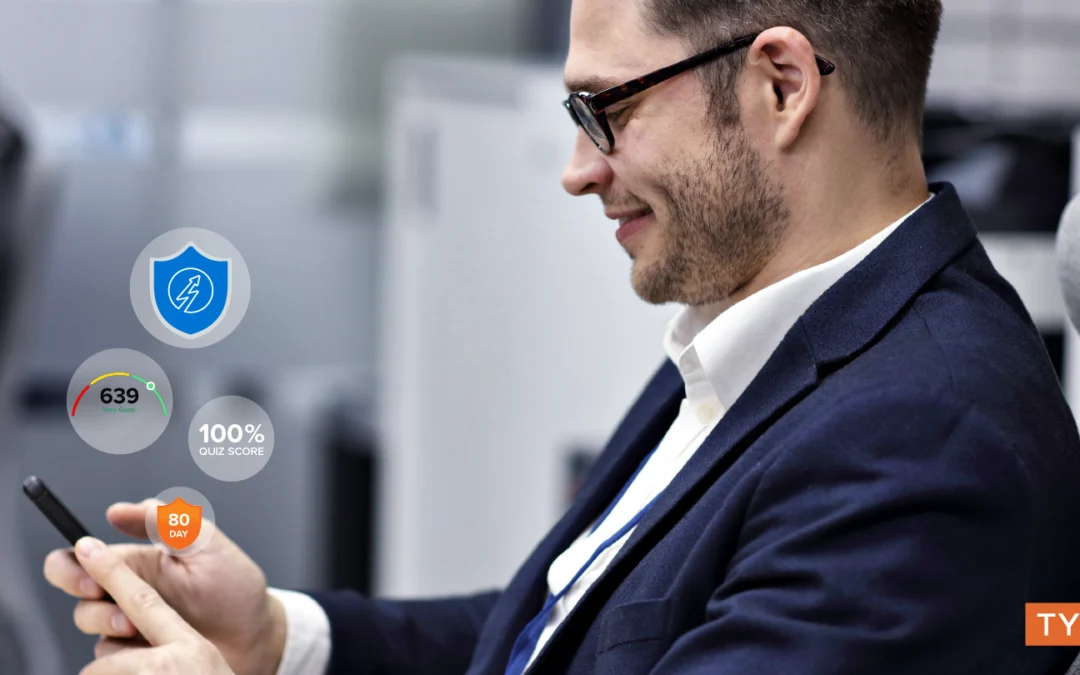Gamification doesn’t just make training fun; it taps into intrinsic motivators like achievement, recognition and competition. By blending gaming elements with structured learning, organizations can boost employee engagement, improve knowledge retention and foster a culture of continuous learning. Here’s how gamification is completely transforming workplace training – and why your company should consider adopting it.
Why Traditional Training Falls Flat
Traditional training formats (think seminars, webinars, professional development workshops, even LMS courses) often struggle to capture employee attention. Long sessions packed with dense material overwhelm learners, causing cognitive overload and disengagement. Employees may show up physically, but mentally, they’re checked out. Unsurprisingly, the outcomes of these sessions rarely justify the time and resources spent on them.
Research shows that learner engagement is directly tied to the effectiveness of training. When employees aren’t engaged, retention plummets, and the likelihood of applying new skills on the job diminishes. This is where gamification in training comes into play – gamified elements create an immersive, interactive learning environment that keeps employees motivated, focused and eager to come back for more.
What is Gamification in Training?
At its core, gamification in training applies game design elements to educational settings. Think leaderboards, badges, point systems, streaks and challenges – all intended to make learning feel more like playing a game. These elements appeal to basic human psychology by providing clear goals, instant feedback and rewards for progress.
But gamification isn’t just about slapping badges on a course or adding a leaderboard. Done correctly, it’s a powerful tool that fosters engagement, builds motivation and improves learning outcomes. Video-based microlearning apps are particularly effective platforms for gamified training because they combine bite-sized content with engaging, interactive elements.
How Gamification Boosts Engagement
- Clear Goals and Progress Tracking: Gamification creates a roadmap for learners. Employees know exactly what they need to do to achieve a reward, whether it’s earning a badge, climbing a leaderboard or completing a challenge. Progress tracking adds an element of transparency, allowing employees to see how far they’ve come and what’s next.
- Instant Feedback and Reinforcement: Traditional training often leaves employees in the dark about their progress until the very end of a session. Gamification flips this model by providing instant feedback. Answered a quiz question correctly? Earn points. Completed a module? Unlock a badge. These small wins keep learners engaged and motivated to continue.
- Healthy Competition: Who doesn’t love a little friendly competition? Leaderboards encourage employees to push themselves, knowing their performance is visible to peers. This doesn’t just boost individual engagement; it also fosters team camaraderie.
The Psychology Behind Gamification
Gamification works because it aligns with intrinsic motivators. Humans are naturally wired to seek rewards and recognition. When employees see tangible evidence of their progress, it triggers a dopamine release, reinforcing positive behaviors. This reward loop keeps employees coming back for more.
Gamification also appeals to our desire for mastery. By breaking down training into manageable challenges, employees gain confidence as they conquer each one. Over time, this builds a sense of accomplishment that transcends the training platform and carries into their day-to-day roles.
Why Gamification Works So Well in Video-Based Microlearning
Microlearning and gamification are a match made in heaven. Microlearning delivers short, focused lessons, while gamification provides the motivation to engage with these lessons consistently. Here’s why they work so well together:
- Bite-Sized Learning Fits Busy Schedules: Microlearning’s daily 1- to 2-minutes segments make it easy for employees to learn without losing momentum, and ensure they feel rewarded for their efforts, no matter how small.
- Targeted Content + Rewards = High Retention: When training focuses on no more than three key concepts per session, learners retain information more effectively. Add gamification, and employees are incentivized to revisit lessons, reinforcing their knowledge over time.
- Seamless Integration into Daily Workflows: Employees can engage with gamified microlearning platforms on their own terms in the flow of work. This flexibility minimizes disruption and maximizes engagement.
Measuring the Impact of Gamification
The benefits of gamification in training go beyond engagement. It delivers measurable improvements in learning outcomes, employee satisfaction and organizational performance:
- Retention Rates Soar: Studies show that gamified training boosts retention rates by up to 80%. Employees not only remember what they’ve learned but are also more likely to apply it.
- Increased Productivity: Engaged employees are productive employees. Gamification keeps them motivated and engaged. Engaged teams experience 37% higher productivity and are 92% more likely to innovate.
- Reduced Turnover: Employees who feel recognized and valued are more likely to stay with their organization. Gamification fosters this sense of belonging, reducing turnover which can cost employers 33% of an employee’s annual salary.
Implementing Gamification: Best Practices
To maximize the benefits of gamification, keep these best practices in mind:
- Set Clear Objectives: Define what you want to achieve – for example, improving safety compliance, developing leadership skills or enhancing customer service.
- Make Rewards Meaningful: Badges and points are great, but pairing them with tangible rewards (like extra PTO or public recognition) can amplify their impact.
- Balance Fun with Function: Gamification should enhance learning, not distract from it. Gamified elements are only as effective as their content and structure, so ensure that every element aligns with your training goals.
- Track and Analyze: Use analytics to monitor employee progress and engagement. This data can help you refine your training programs for better results or even help you discover the next generation of company leadership.
Make Gamification in Training Work for You
Gamification isn’t just a trend – it’s the future of workplace learning. By integrating gamified elements into video-based microlearning platforms, organizations can create training programs that are not only effective but also enjoyable.
Transform your learning programs from boring to scoring and watch as your employee engagement, retention and performance reach new heights. Learn how by scheduling a meeting to speak with a Tyfoom training consultant today!

